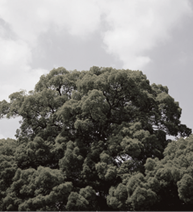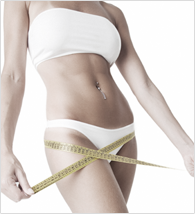





You can also download Harald Gaier's diet, which has been designed to support the actual treatment, and successful control of, an intestinal yeast overgrowth with increased gut permeability:
Dysbiosis and gut fermentation diet






|
Irritable bowel syndrome (I.B.S.) is a common 'functional' disorder of the gut. A functional disorder means there is a problem with the function of a part of the body, but there is no abnormality in the structure. I.B.S. causes various symptoms (listed below). Up to 1 in 5 people in the UK develop I.B.S. at some stage in their life. I.B.S. can affect anyone at any age, but it commonly first develops in young adults and teenagers. I.B.S. is twice as common in women as in men. |
|
WHAT IS IT? I dont think any condition has undergone more name changes over the past 90 years than I.B.S. At various times, in the medical literature, it has been referred to as spastic colon, functional bowel disorder, dyspeptic diarrha, gut hyper-reactivity, spastic constipation, anxiety- and GI-syndrome, mucous colitis, functional bowel syndrome, and, recently dysfunctional gut syndrome is beginning to displace irritable bowel syndrome. This makes one suspect that no-one seems entirely sure of what I.B.S. really is. The symptoms associated with I.B.S. generally seem to include abdominal distension (bloating) and some discomfort - particularly after food, borborygmi (bowel rumblings), mucus in the stools, constipation alternating with diarrha, decreased memory and concentration, fatigue or lethargy, and poor quality of sleep. The probability of I.B.S. increases the more of these symptoms are present. I.B.S. must be distinguished from conditions that may mimic I.B.S: colorectal cancer, cliac disease, infective diarrha, diverticular disease, carcinoid syndrome, gallstones, appendicitis, and one of the two inflammatory bowel diseases. There are specific diagnostic procedures to exclude such other conditions. CAN DIET HELP? The 'stone age' diet or 'elemental' diet [L & A Chaitow, Stone Age Diet, London: Macdonald Optima, 1987], which is free of grains, red meat, cow's milk products, refined sugars, and all processed foods, has been shown to induce a dramatic remission in this and related illnesses [G Zoli, et al. Randomized Controlled Study Comparing Elemental Diet and Steroid Treatment in Crohn's Disease, Alimentary Pharmacol Ther, 1997, 11(4):735-740]. WHICH NUTRITIONAL SUPPLEMENTATION SHOULD I CONSIDER? Ginger (Zingiber officinale) was shown gently to reduce colic spasms, flatulence, nausea and diarrha in a double-blind randomized clinical trial [Lancet, 1982, i:655-657]. Rosemary (Rosmarinus officinalis), peppermint (Mentha piperita) and balm (Melissa officinalis) have been demonstrated to have a calming effect on intestinal spasms and to reduce flatulence [H B Forster, H Niklas & S Lutz. Antispasmodic Effect of some Medicinal Plants, Planta Medica, 1980]. Carraway seed (Carum carvi), fennel (Fniculum vulgare), and probably dill (Anethum graveolens) have a similar effect [R F Weisz. Herbal Medicine, Ab Arcanum: Gothenburg, 1988, pp 67 & 68]. The globe artichoke (Cynara scolymus) has a long history in helping with liver detoxification and treating gallbladder spasms that occasionally accompany I.B.S. [HH Hammerl. Wiener medizinische Wochenschrift, 1973, 1223:601; H Dierel. Wiener medizinische Wochenschrift, 1972, 122:188; and E Fröhlich. Subsidia Medica, Wien, 1973, H.3:5 (with an extensive list of further references)]. Dandelion has comparable effects [R F Weisz. Herbal Medicine, Ab Arcanum: Gothenburg, 1988, pp 94 & 96]. I.B.S. sufferers who are too busy to do anything else should at least be taking either artichoke or dandelion whole-plant juices on a daily basis. WHAT ABOUT "CANDIDA" OR FUNGAL-TYPE GUT DYSBIOSIS? There are three species of yeast or fungus that can invade the gut and settle there:
The difference is evident from responses to dietary manipulations. For example, it seems the last two will ferment white potatoes, maize and rice, as well as the other grains, whereas Candida albicans only appears to ferment wheat, rye, barley and oats. IS THERE A SET OF SYMPTOMS THAT POINTS TO 'CANDIDA' OR A 'CANDIDA-LIKE' CONDITION?
Sometimes there are other yeast infections present too, such as:
CAN AN INTESTINAL YEAST OVERGROWTH OR A BACTERIAL GUT DYSBIOSIS ACTUALLY BE MEASURED? The Gut Fermentation Profile can do that [A Hunnisett, J Howard & S Davies. J Nutr Med, 1990, 1:33-38]. Abnormalities of bacterial fermentation or a possible yeast overgrowth are indicated by the results of this blood test. CAN A 'LEAKY GUT' BE TESTED FOR? Yes, by means of the Gut Permeability Probe [K K Eaton, M Howard & J McLaren-Howard. J R Soc Med, 1995, 88:63-66]. A drink containing PEG 400, a mixture of eleven sizes of molecules, is taken. The different sizes of molecules pass through the gut wall and into the circulation with differing levels of ease. All the urine passed over the next six hours is collected. The quantities of each molecular size of PEG in the urine collection are measured and from this an accurate absorption profile can be reconstructed. IS THE BREATH HYDROGEN TEST USEFUL IN THE OF GUT FUNCTION? Hydrogen is generated by bacterial action in the gut. The normal fasting level is low but increases are seen after the digestion of fermentable carbohydrate. If bacterial action occurs in the stomach the hydrogen increase is detected in a matter of minutes. This can also be helpful in detecting Helicobacter Pylori (a bacterial infection associated with stomach ulcers). IS THE CANDIDA ANTIBODY TEST USEFUL? Only to establish whether you may be hypersensitive to the Candida albicans yeast organism, though it may not be in your gut at all. In other words, it does not tell you whether, in fact, you have a yeast overgrowth [G F Kroker. Chronic Candidiasis and Allergy. In: J Brostoff & S J Challacombe (eds): Food Allergy and Intolerance, W B Saunders: Philadelphia, PA, USA 1987, pp 850-872]. Stool cultures should also not be relied upon for a definitive exclusion of a candida diagnosis [J E Pizzorno, Jr & M T Murray. Textbook of Natural Medicine (loose-leaf), Bastyr University: Kenmore, WA, U.S.A., 1995 (and later), pp IV:Candid-1to Candid-6]. They are very useful for investigating parasitological aspects. WHAT COMMON PREDISPOSING CONDITIONS ARE THERE? There are two common predisposing conditions: Hypochlorhydria (reduction in stomach acid production) Decreased pancreatic exocrine function (too few pancreatic enzymes)[H C Gaier, K K Eaton, M Howard, J McLaren Howard & L Reid. Gastric Acid Production, Pancreatic Secretions and Blood Levels of Higher Alcohols in Patients with Fungal-type Dysbiosis of the Gut, J Nutr & Env Med, 2002, 12(2):107-112] Digestive secretions, such as gastric hydrochloric acid, pancreatic enzymes, and bile, inhibit the overgrowth of Candida and prevent its penetration into the absorptive surfaces of the small intestine. The pancreatic enzymes, for example, are largely responsible for keeping the small intestine free of parasites (be they unwanted bacteria, yeasts, protozoa, and intestinal worms) [E Rubinstein, Z Mark, J Haspel, et al. Antibacterial Activity of the Pancreatic Fluid, Gastroenterol, 1985, 88:927-932] and help the body break down immune complexes [K Ransberger. Enzyme Treatment of Immune Complex Diseases, Arthritis Rheum, 1986, 8:16-19]. HOW ARE THESE DETECTED? I do it by means of clinical observations: A low stomach acid production can manifest itself through a tendency to nausea (e.g. morning queasiness), excessive eructations (burping), an uncomfortable pressure sensation in the pit of the stomach, some hyperventilation and/or occasionally by sophageal reflux. People with a low production of pancreatic enzymes and/or stomach acid often suffer from panic attacks. The reason for this is that the outlet of the stomach into the small intestine (the pylorus) opens only when the contents of the stomach has reached a particular, and always the same, level of acidity. With too little stomach acid, it can take an exceptionally long time before the pylorus opens. That means the stomach distends as fluids and foods enter but cannot leave it (hence the nausea, the pressure sensations, the burping to relieve, the reflux - a burp behind some material, etc). The distended stomach presses on the cardio-vascular system right next to it. This produces palpitations and a state of anxiety, which we call panic attacks. WHAT IS A SUCCESSFUL THERAPEUTIC APPROACH? There are six important steps in the successful control of an intestinal yeast overgrowth with increased gut permeability:
HOW LONG DOES TREATMENT USUALLY TAKE? On average, it takes ten weeks from test to finish, but it sometimes takes a bit longer. 
|
|



